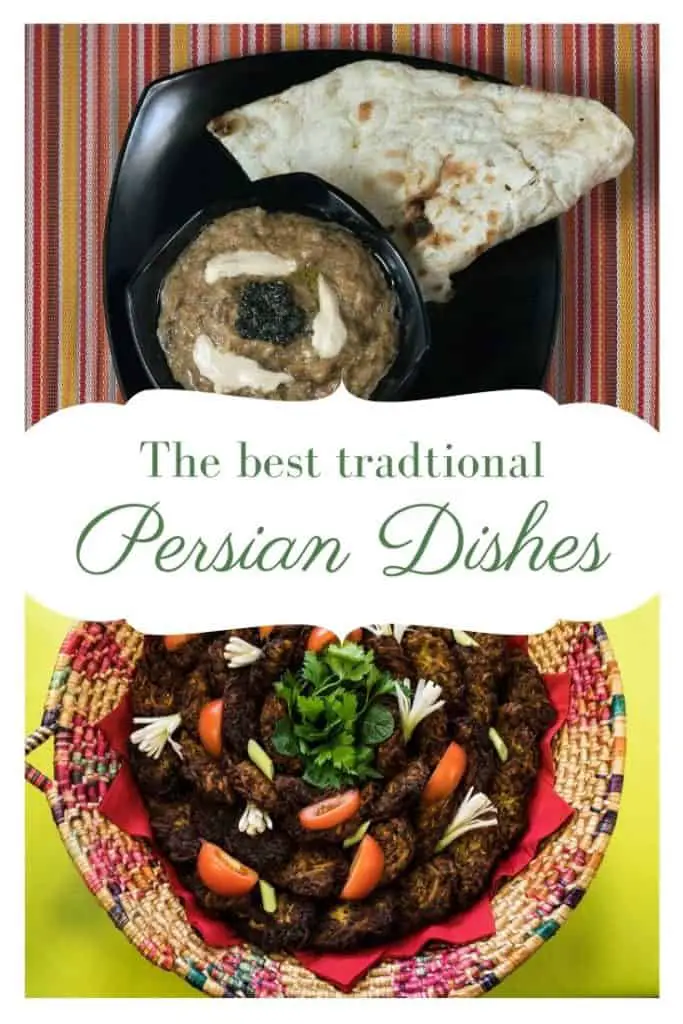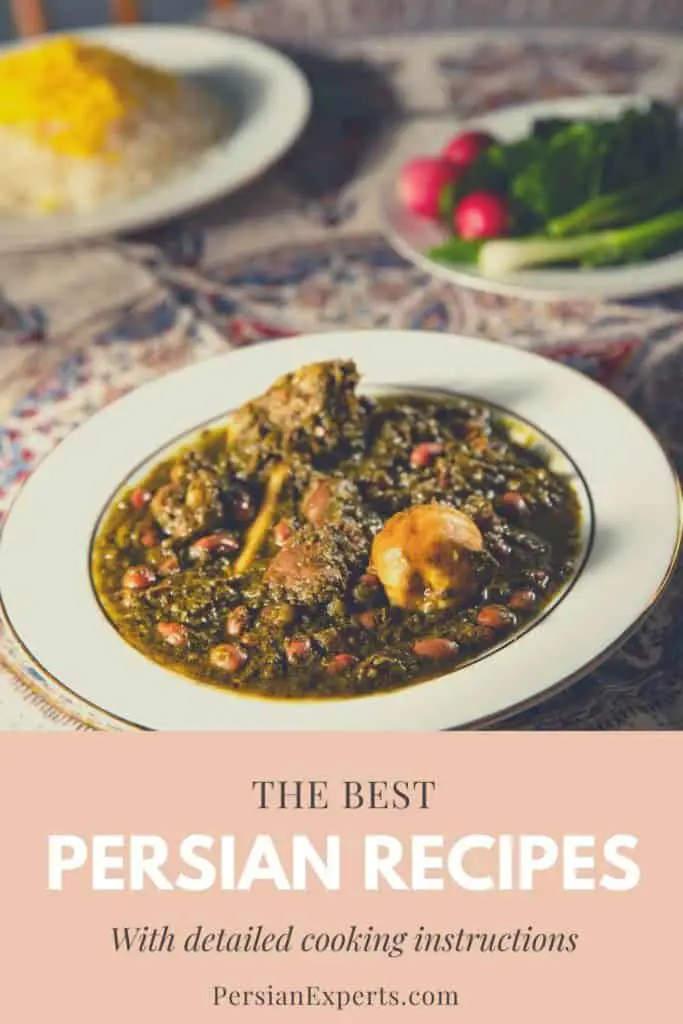Food is a significant part of the Persian culture. It represents the rich customs and culture of Iran as well as the binding force between families and friends. The Persian cuisine is rich in aromas and flavors. This is thanks to the influences of the Silk Road, and other neighboring countries such as Turkey and Russia. In this article, we compiled an overview of the most common and best Persian dishes and recipes.
Iranians believe that food helps them bring together near and dear ones. Therefore, many dishes are cooked for specific celebrations and occasions such as the Persian New Year or Nowruz.
Since most traditional Persian meals are shared with several people, they include various dishes. Along with each dish, different varieties of bread, such as Sangak, Barbari, and Lavash are served. Moreover, a Persian feast often includes appetizers such as olives, yogurt, a variety of pickles, and Shirazi salad. The traditional beverage that usually accompanies the meal is called “Doogh”. A drink made of yogurt, water, salt, and herbs.
But let’s get started with the best Persian recipes:
Tachin or Persian saffron rice
Tachin is crispy baked Persian rice that is often layered with meat, spices, and dried fruits. It is an indispensable part of a typical Persian menu and tastes amazing. It comprises of two parts: the crunchy part of the rice at the bottom of the pot, called Tahdig. The rice can be flavored with meat fillets, saffron, almonds, raisins and other ingredients.
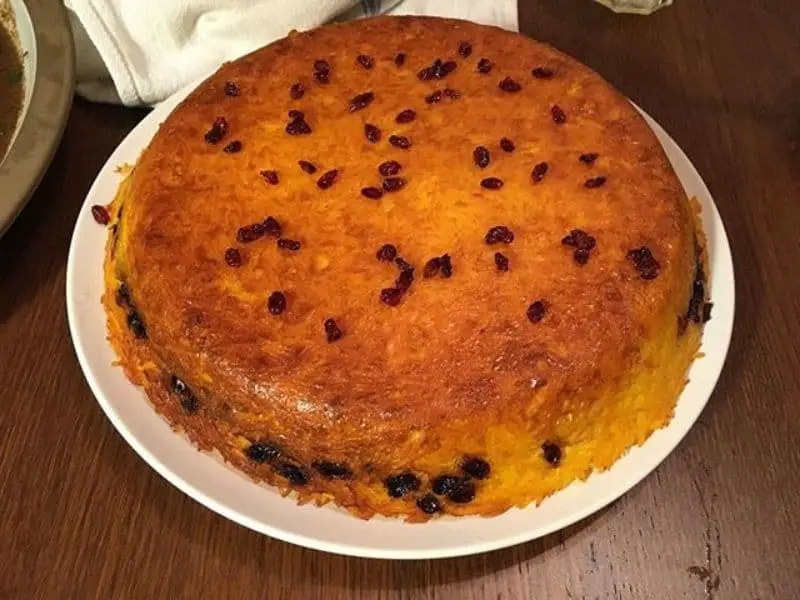
Below you will find the detailed step-by-step instruction of how to make Tachin:
Ingredients
- Two cups/360 g of basmati rice
- One tbsp salt
- Three liters water
- ½ cup of dried barberries
- Two tbsp of unsalted butter
- 1 ½ tsp of rose water (optional)
- One tsp of saffron threads
- Two tbsp of warm water
- One cup/250 g plain yogurt
- ½ cup/125 ml of oil
- Three egg yolks
- ¾ tsp of salt
Cooking instructions
- Bring water to boil and add salt and rice. Cook for five minutes, then drain and leave for five minutes.
- Melt the butter over medium heat and cook the barberries for 1 ½ minute until they are plump.
- Remove from heat, add the rose water and stir.
- Preheat the oven at 200°C/390°F and grease an oven-safe pot with oil.
- Ground the saffron and mix it with water. Let it seep for 10 minutes.
- Blend yogurt, eggs, oil, saffron water, and salt in a bowl.
- Add the mixture to the rice, and mix well.
- Pour half the rice into the oven-safe pot and smoothen the surface. Top it with 1/3 of barberries.
- Pour the remaining rice into the pot and sprinkle another 1/3 of barberries. Press firmly, and cover with foil.
- Bake for 60-80 minutes till the crust is golden.
- Let it rest for 10 minutes and remove the foil. Flip it upside down and serve.
What is the best Iranian saffron? Where to buy it and what do you have to look for when buying saffron? Check out our full post.
Ghormeh Sabzi
Ghormeh Sabzi is a typical Iranian recipe. It is a type of stew prepared with fresh herbs and many consider it the national Iranian dish. The main ingredients are parsley, scallions, cilantro, and dried fenugreek leaves. However, the secret ingredient that renders the unique taste is black lime or limu Omani. Ghormeh sabzi is always served with chelow, Persian steamed rice, or rice with tahdig.
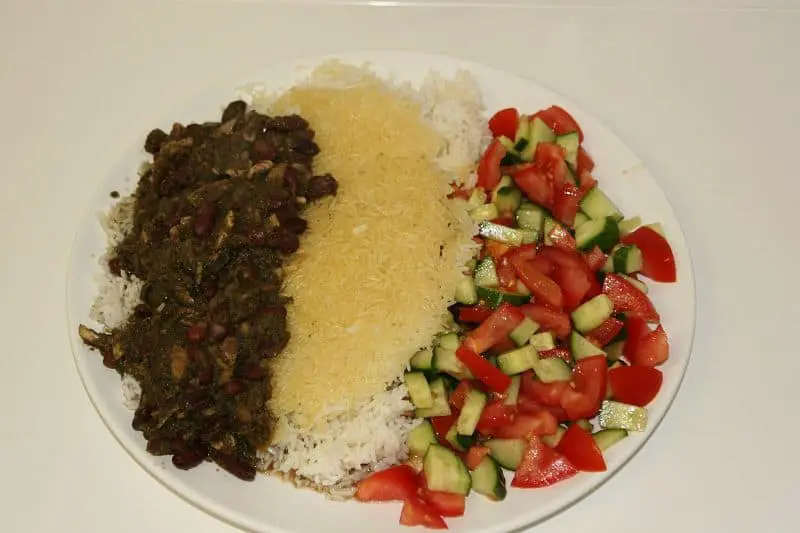
Below you will find the detailed step-by-step instruction of how to make Ghormeh Sabzi:
Ingredients
- Two pounds lamb or beef stew meat
- One cup of red kidney beans
- One onion
- Four bunches of parsley
- One bunch of cilantro
- Four scallions
- One tbsp of dried fenugreek
- Four dried black limes
- One tbsp turmeric
- Vegetable oil
- Salt
- Pepper
Cooking instructions
- Chop all the herbs finely. Also chop the onions and set them aside.
- Heat four tbsp vegetable oil over medium heat and sauté the herbs for 15 minutes. Set aside.
- Sauté chopped onions in two tbsp oil until golden brown.
- Add the meat, turmeric, salt, and pepper to the onions and fry for 8 minutes.
- Add soaked beans, fried herbs, and black lime.
- Pour the water and bring it to a boil. Lower the heat and simmer for 2 hours.
- Serve over Persian steamed rice.
Khoresh Gheymeh
Khoresh Gheymeh, also known as Gheymeh Polo, is a beef and pea stew. It is one of the most famous Persian stews, often served over white or aromatic rice with saffron potatoes. The yellow split peas are called “dir paaz,” which means long cooking. Usually, Gheymeh is made with lamb or beef. However, using white meat has also become popular in the recent years.
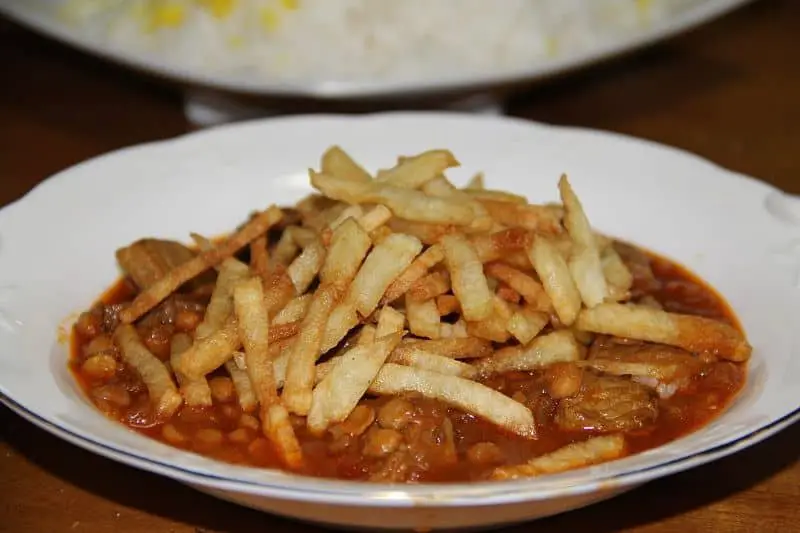
Below you will find the detailed step-by-step instruction of how to make Khoresh Gheymeh:
Ingredients
- Two pounds of meat (beef or lamb)
- One cup of yellow split peas
- One large onion
- 2-3 tbsp of tomato paste
- 4-5 dried limes (limoo Amani). Soak in water for five minutes and make tiny holes with a fork.
- ½ tsp of turmeric
- Pinch of cinnamon
- One tsp of rosewater (optional)
- Salt and pepper
- Vegetable oil
- Water
- Two large potatoes peeled and sliced like fries.
Cooking instructions
- Heat one tbsp of oil in a small pot or a pan over medium heat and add the tomato paste and sauté for 2-3 minutes. Set aside.
- Heat 3 tsp of oil in a large pot over medium heat and add the onions and sauté. Add turmeric.
- Add the meat and salt, pepper, and a pinch of cinnamon. Stir well.
- Add the yellow split beans and sauté for five minutes. Also add the tomato paste and mix well.
- Pour enough water to cover the contents of the pot. Add the dried limes and simmer for 1-1/4 hours over low heat.
- Make sure the yellow split beans do not turn soft and mushy.
- Fry the potato slices or cover them with oil and bake them in the oven until crisp (around 20 minutes at 200°C/390°F.
- Add the rose water if you like and serve hot and fresh.
Kashke Bademjan
Kashke bademjan, also known as kashko bademjan, is a Persian eggplant dip. Kashk means yogurt whey, and bedemjan means eggplant. Therefore, the dish is a combination of these two ingredients. It is mainly served with bread like lavash, naan, or pita. It is one of the best vegtarian Persian dishes.
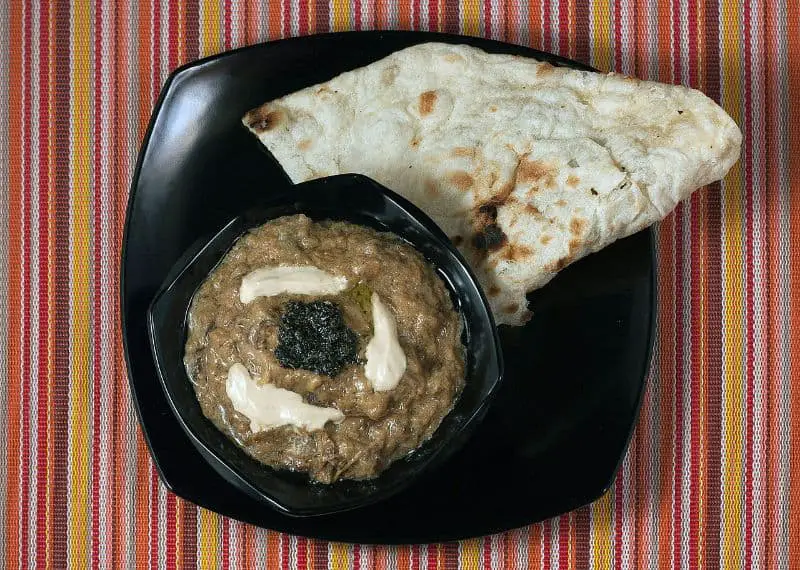
Below you will find the detailed step-by-step instruction of how to make Kashke Bademjan:
Ingredients
- Four tbsp of olive oil
- Four Chinese eggplants (normal eggplants are also fine)
- One large sliced onion
- Four cloves of garlic
- ½ tsp of turmeric
- ½ tsp of salt
- ½ tsp of black pepper
- ¼ cups of water
- ¾ cups of liquid kashk
- One tbsp of bloomed saffron
- Two tbsp of dried mint
Cooking instructions
- Peel the eggplants and cut them in halves, then cut into half width-wise.
- Heat two tbsp of olive oil. Add the eggplants and sear both sides until golden brown.
- Take the eggplants out and place them on a plate.
- Add two tbsp of olive oil into the pan and sauté the onions until golden brown.
- Add the garlic cloves.
- Add the eggplants, turmeric, salt, and pepper. Mix well and add water. Cover and cook for ten minutes.
- Once the eggplants are cooked, mash them well.
- Add kashk, one tbsp of dried mint, and saffron and stir well. Cook for another eight minutes.
- Serve hot and fresh with naan, lavash, or pita bread.
We hope you’ve found some great inspiration on our overview of the best Persian recipes. If you want to learn more about the Persian cuisine, we recommend you to check out our overview and review of the best Persian cookbooks.
Let us know in the comment section if you have any questions or think there is another typical Iranian dish we should definitely add to the list.
Click on the images below to pin this post for later:

